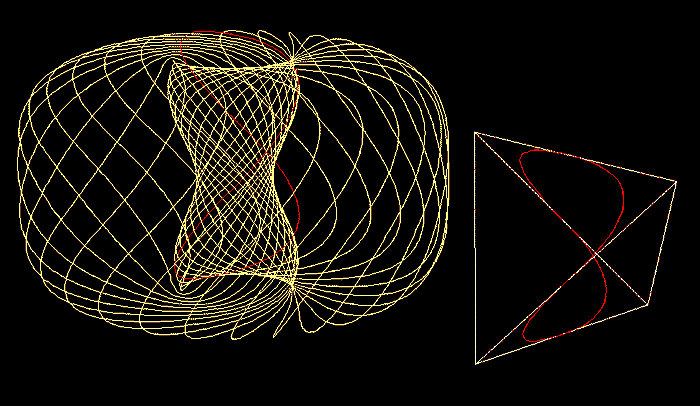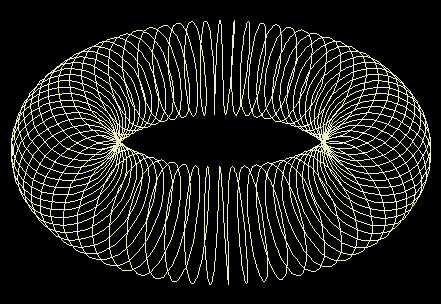This model was inspired by discussions on the synergetics forum, of the 1990s. These were related pages:
1990s:... triploidCoil.html ~~ ST.html
2009.... A tetrahedron is formed as a helix:. Is this the primal tetrahelix?.

This model was inspired by discussions on the synergetics forum, of the 1990s. These were related pages:
1990s:... triploidCoil.html ~~ ST.html
2009.... A tetrahedron is formed as a helix:. Is this the primal tetrahelix?.

Above Left: Biaxial? or tetra- toroid?, ( poloidal?), as drawn here has 27 identical loops. Compared with ordinary toroid coil below, the main differences are twisted loops instead of the plain toroid loops and the involuted "donut hole". This 3D model can be built. While 27 closed loops are presented to show a tetrahedron relationship, all loops can be one continuous wire and has been studied for interesting electronic properties.
Above Right: Edge centers of the tetrahedron were used as snap points, (alignments), to "mold" an individual loop, representative of poloidal paths. The red loop indicates corresponding views of one loop, (in poloidal and in tetrahedron mold above- right.) The tetrahedron functioned as a mold in a 3D CAD program: each point or corner was used in a consecutive snap operation while making a closed, quadratic, bezier curve, (or loop). Another way to visualize: grab an "O" ring at two points and twist 90 degrees. Another tetrahedral insight: twisting, bending or warping... Is there a connection to the "hand rule"?, (of electro magnetism, that is).


The content on this website, http://harmoniouspalette.com, is placed in the public domain only as a free exchange of ideas and as a "hard studied wish to serve life". The author assumes no responsibility for the improper use of the concepts in these web pages, as all relevant laws of life and local codes should be verified and observed before any building or experimentation proceeds. discussion is welcome, please write. Bo Atkinson